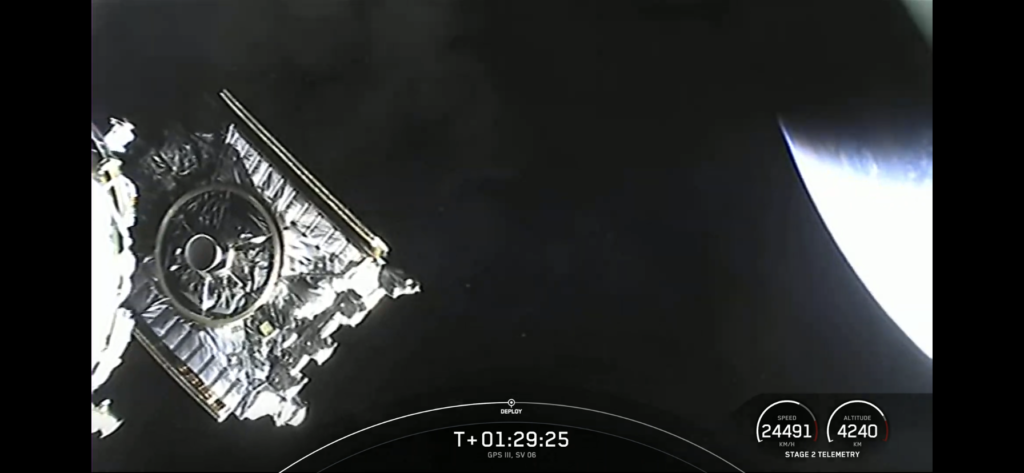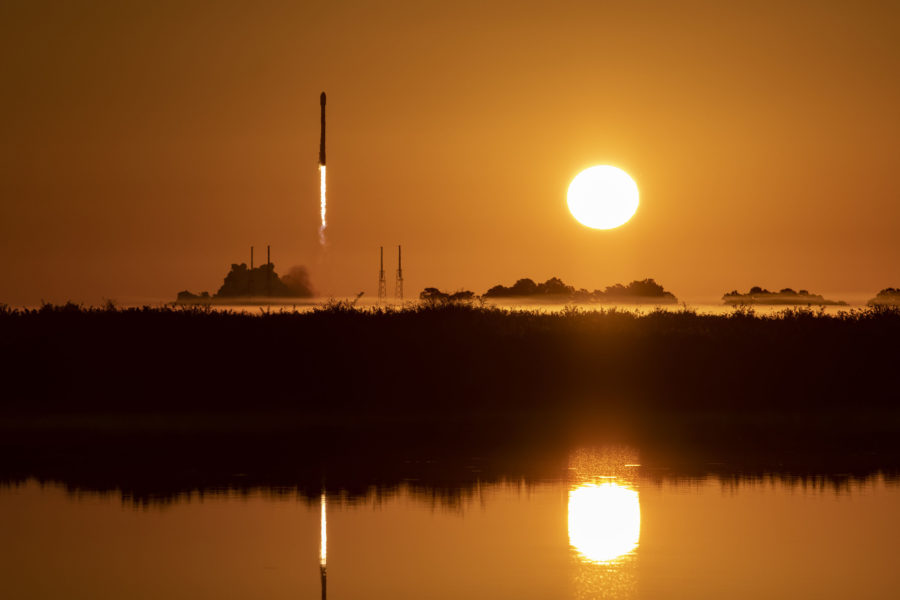The U.S. Space Force and SpaceX successfully launched the sixth GPS III satellite into orbit Jan. 18, bolstering the crucial position, navigation, and timing constellation.
Launching from Cape Canaveral Space Force Station’s Space Launch Complex-40 at 7:24 a.m. Eastern, the satellite rode a SpaceX Falcon 9 rocket into space. The Falcon 9’s first-stage booster was successfully recovered and will be refurbished for another launch, continuing a reuse process the Space Force started using with the launch of the fifth GPS III satellite in June 2021.
“With the GPS III [Space Vehicle] 06 launch, GPS has accomplished another step towards Positioning, Navigation, and Timing’s overall mission of modernizing capabilities for our civilian and military users while maintaining the performance and resiliency of our existing architecture,” said Cordell DeLaPena Jr., program executive officer for military communications and PNT, in a statement. “I am extremely proud of the work GPS’s teams and collaborators have done to bring our satellite infrastructure closer to a new age of robust and highly accurate signals.”
Lockheed Martin built the satellite, which will ultimately be part of a 10-satellite series. Lockheed said the new satellites are three times more accruate and up to eight times harder to jam compared to second-generation GPS satellites.
Flying in mid-Earth orbit, the new satellite, which was named after famed aviator Amelia Earhart, will go through about two weeks of tests and a few months of monitoring before beginning operational use, joining the constellation of 31 satellites that currently make up the Global Positioning System. The overall GPS system consists of GPS IIR, IIR-M, IIF, and GPS III space vehicles, and this sixth GPS III satellite will replace an aging IIR unit.
“This was a textbook launch, reflecting a highly professional, experienced team executing well-honed procedures and the results speak for themselves,” Maj. Gen. Stephen Purdy Jr., program executive officer for SSC’s Assured Access to Space effort and commander of Space Launch Delta 45, said in a statement. “Working side-by-side with our launch service provider and space vehicle partner to meet the mission need on-time and with precision is our normal ops. And today’s mission supports not only our global warfighters but people all over the world in every facet of life.”

The Jan. 18 launch comes almost exactly 19 months after the launch of the fifth GPS III satellite—the longest gap between GPS launches since the current Block III satellites started heading to space in 2018. It also came just days after a Jan. 15 mission, where a SpaceX Falcon Heavy rocket carried the USSF-67 mission into orbit. That launch included two Space Force satellites—the Continuous Broadcast Augmenting SATCOM (CBAS)-2 satellite and the Long-Duration Propulsive ESPA (LDPE)-3A satellite, which included five different Space Force payloads.
Dozens more launches from Space Force facilities are planned in the coming year, but it will be a while before the seventh GPS III satellite heads to space—Space Systems Command announced in May 2022 that it was targeting 2024 for that launch.
As of August 2022, the seventh, eighth, and ninth GPS III satellites have all been declared “Available for Launch,” with the last of those space vehicles scheduled for launch in late 2025.
